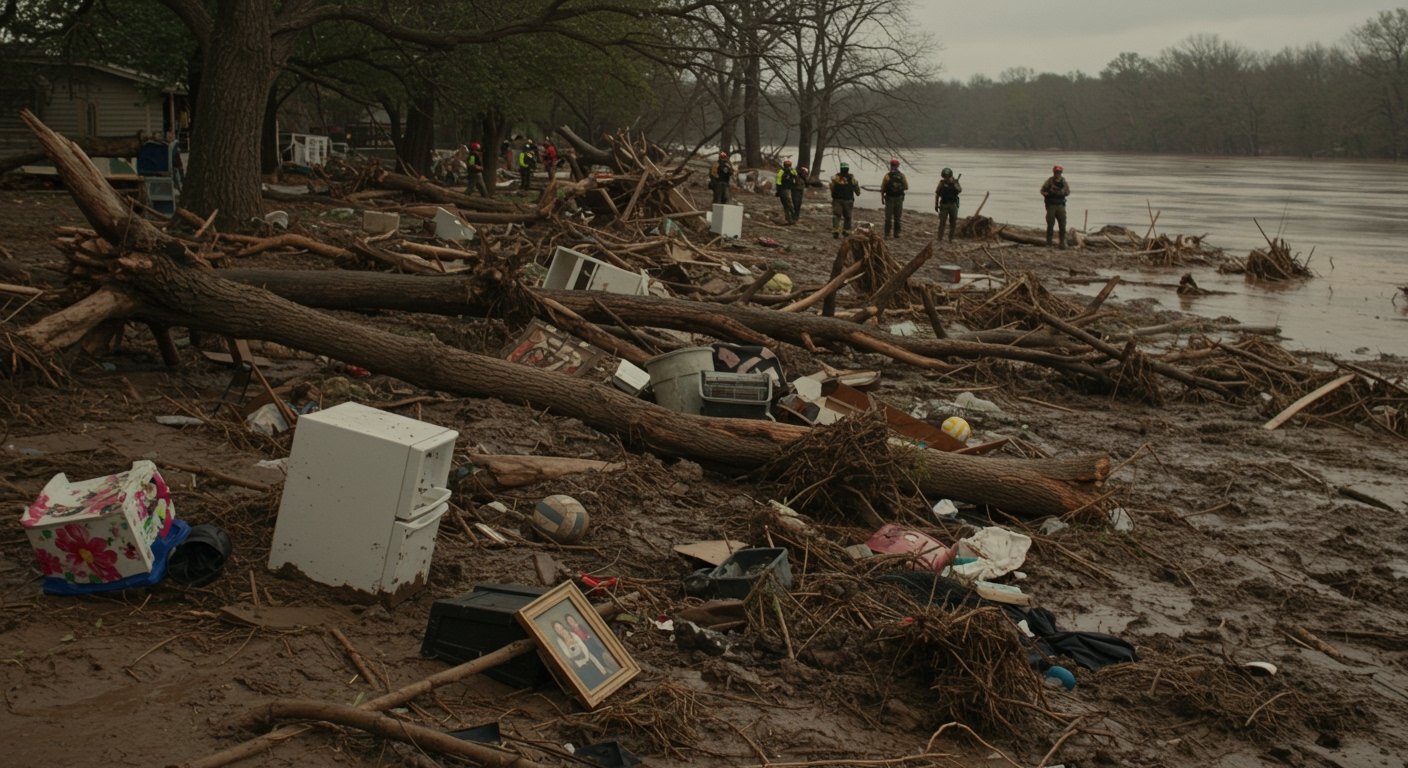Texas is grappling with the aftermath of catastrophic flash floods that swept through the state over the July Fourth weekend, leaving behind widespread devastation and a death toll that has tragically surpassed 100. As of Monday, authorities confirmed that 104 individuals have lost their lives in what officials describe as among the nation’s worst flash floods in decades. The grim milestone underscores the immense scale of the disaster, which tore through riverside communities and summer camps, catching many off guard.
The Rising Human Toll
The human cost of the flooding is profound and continues to mount as search and rescue operations persist across affected areas. The death toll stood at 104 on Monday, a significant increase as rescue teams navigated treacherous conditions. A particularly heartbreaking tragedy unfolded at Camp Mystic, a century-old all-girls Christian summer camp located along the river. The camp suffered devastating losses, with 27 campers and counselors tragically perishing in the deluge.
While the disaster impacted multiple regions, Kerr County bore the brunt of the fatalities reported thus far. Search teams working tirelessly in Kerr County have located the bodies of 84 people. Among the victims recovered in this single county were 28 children, highlighting the vulnerability of families and young people during the sudden and violent inundation. Kerr County officials confirmed that despite the extensive search efforts, 10 campers and one counselor from Camp Mystic still remain missing, adding to the anguish of affected families and the community.
The fatalities extended beyond Kerr County. Authorities reported that 19 deaths occurred in other counties across the state. These included Travis, Burnet, Kendall, Tom Green, and Williamson counties, indicating the wide geographical reach of the devastating weather event.
Search and Rescue Efforts Continue
Amidst the destruction, search and rescue teams are continuing their painstaking work, scouring debris-laden riverbanks and searching for dozens of individuals who remain unaccounted for. Governor Greg Abbott stated that more than 36 people are still missing statewide, a number that rescue officials caution could potentially grow as the full scope of the disaster becomes clearer.
The scale of the search operation is immense. Over 1,000 volunteers have joined official rescue crews in Kerr County alone, demonstrating a powerful community response to the crisis. Across the impacted regions, more than 1,700 personnel are involved in the complex and dangerous recovery efforts.
Rescuers are navigating challenging conditions, including extensive debris fields left by the receding floodwaters. Riverbanks on Monday were littered with a chaotic mix of twisted trees, mattresses, refrigerators, and other household items. Amidst the wreckage, poignant personal belongings such as volleyballs, canoes, and even family portraits have been found, serving as stark reminders of the lives and homes swept away by the torrent.
A concerning incident occurred on Monday when authorities urged the public to cease flying private drones in the disaster area. The plea came after a private drone crashed into a rescue helicopter, rendering the critical aircraft out of service and potentially hindering vital aerial search capabilities.
Questions Raised About Warnings and Evacuations
The severity and suddenness of the flash floods have led to critical questions being raised regarding weather warnings and evacuation protocols, particularly in the affected areas sometimes referred to as “flash flood alley” due to their susceptibility to such events. Officials plan to conduct reviews of the weather alerts issued and investigate why some camps and riverside properties did not evacuate in advance of the flood.
Kerrville City Manager Dalton Rice commented on some of the challenges faced during the event, noting that poor cell phone service in many of the camp areas hindered the effective dissemination of warnings. This logistical challenge highlights the difficulties in alerting populations in remote or poorly connected locations during rapidly developing weather emergencies.
Ongoing Challenges and Outlook
The immediate priority remains the search for the missing and the recovery of victims. However, the challenges are far from over. Forecasters have warned that continued rainfall in the region could potentially worsen existing flooding conditions and further hinder the ongoing recovery efforts.
The long-term impact of the floods will require significant efforts to rebuild infrastructure, homes, and lives across the affected counties. As the state grapples with the magnitude of this disaster, investigations into the events of the July Fourth weekend will likely continue, seeking to understand how such a catastrophic loss of life occurred and how future tragedies in Texas’s flood-prone regions might be prevented.






